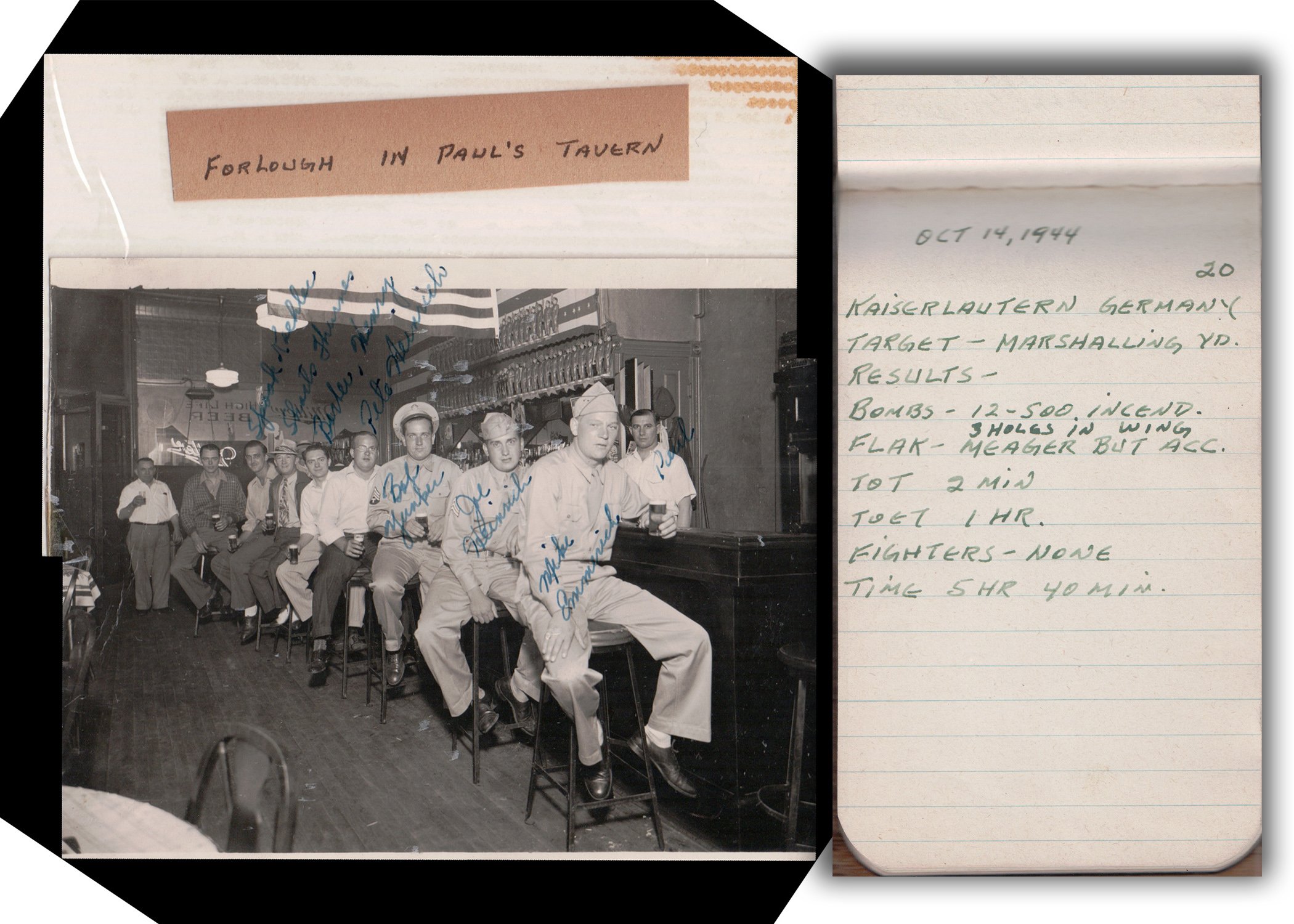The Two Best Places to Begin Researching your 20th Century Veteran’s War Service
Maybe it’s because I’ve spent the last eighteen years as part of the military community; Or perhaps it’s because I grew up in a family largely comprised of history buffs. But in any case, I find that many Americans have a desire to learn more about their ancestors’ War time service, particularly that of the First and Second World Wars.
A friend recently tagged me in a Facebook post made by a member of a military community Facebook page that consists of over 16,000 members. A member posted a question about learning more about her husband’s grandfather’s Second World War Service. She received some good answers, including the second resource on which I will elaborate below. However, not one person suggested what I consider to be the first place you should begin to research your 20th century veteran ancestor: The Family Archive.
A page from my grandfather’s mission diary
Most families have papers, photos, postcards, funeral cards etc. that are passed down from previous generations and they can absolutely be a goldmine of information. My own grandfather not only scrapbooked during his time serving in the Second World War, but he also kept a diary of every single mission his crew flew during the War. These things are priceless family heirlooms which I have scanned and digitized.
You may not know who holds the “family archive” in your family, or maybe different individuals hold different things, but it is worth your time to make some inquiries. *As a tip, be sure to express an interest in seeing and scanning the family archive and not in taking anything. In my experience, people can be very possessive of these things even if they don’t hold an active interest in genealogy.*
Now, I imagine not all families will be as lucky as I was in finding war time memorabilia. That’s ok. The goal when looking through family papers is to try to look for clues about your ancestor’s unit and service time. If you know exactly when they served and with whom they served, you can then begin to expand your research.
The second way to begin to learn about when and with whom they served is to request your ancestor’s Personnel File from the National Archives. Now, I know what you are going to say, “But I thought all those files burned in a fire?” While it’s true that most of the records burned in St. Louis in 1973, not EVERYTHING burned. For example, you may still be able to obtain a pay stub for your service member. Whatever documents are obtainable can again tell you about your ancestor’s unit.
Part of what remains of my Second Great Grandather’s Military Personnel File. Notice, it names the Ship he served on during WWI
Once you have your ancestors’ unit and service time, the next step is to begin researching that unit. There are unit histories for example at Internet Archive. Some units have active associations which hold historical documents and artifacts. Finally, you may not be aware that each military branch has its own archive, such as the US Army Center of Military History at Fort McNair or the Air Force Historical Research Agency at Maxwell AFB. You can research the archives in person or potentially hire someone to research the archives for you.
Finally, once you know your ancestors unit and service years, you can use all the resources the World Wide Web has to offer to put you in touch with others who hold an interest in the history of that unit. And trust me, there are a lot of War history buffs out there who have a LOT of knowledge! Best of luck in your search!




